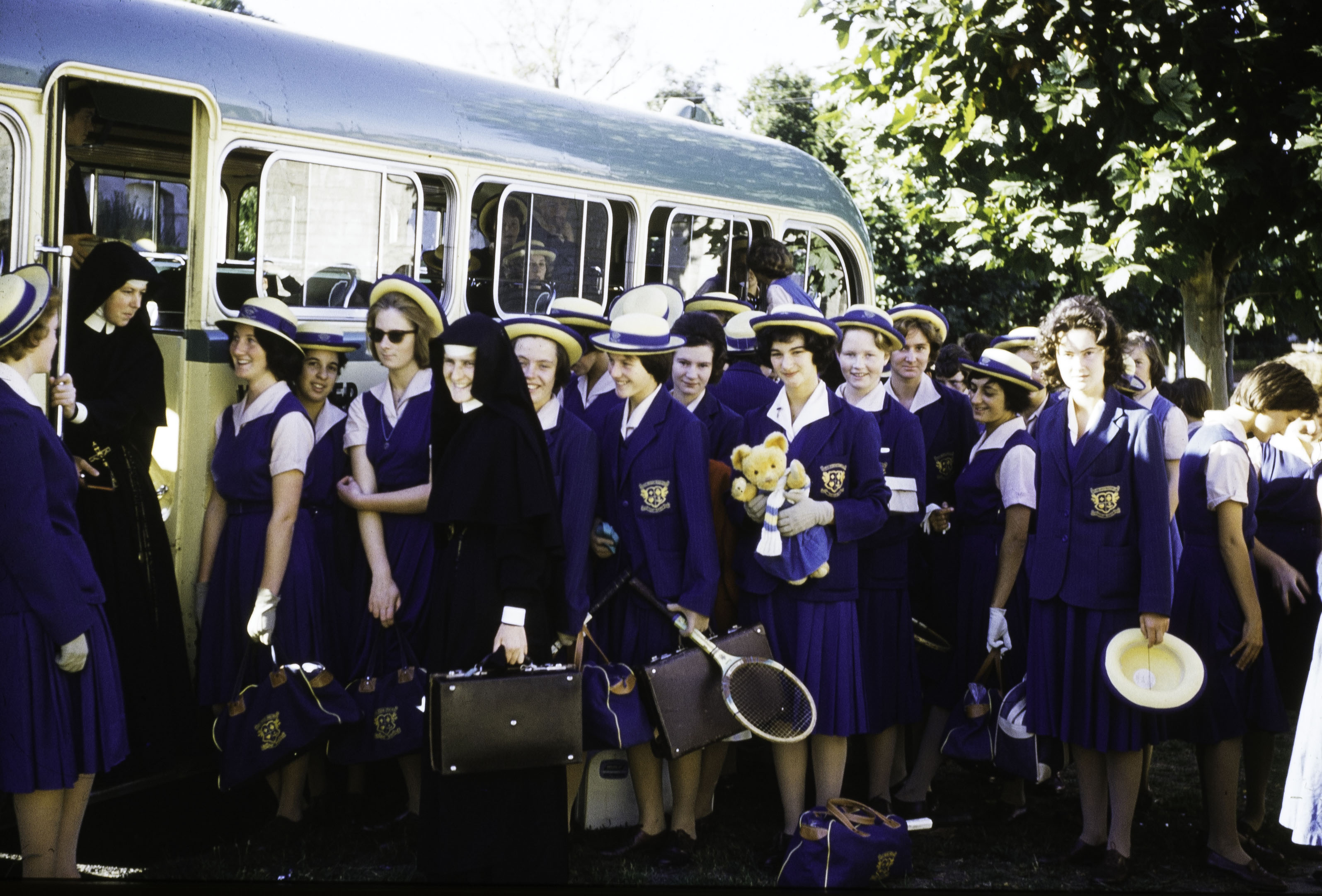Onward bound senior students, c.1950s

Mother Xaveria Hannan stepping off the bus, as students wait to board with Mother Josephine Collins.
All students were expected to wear well-tailored, pleated cotton dresses in the summer and heavy, woollen skirts and cotton shirts with ties and black blazers in winter. The first uniforms were introduced in the 1930s. According to one student, Marian de Lacy Vale, these were ‘supplied by the draper Craig Williamson in Flinders Street, Melbourne; the school tunic was a pleated royal blue, the blouse beige Fuji silk with a lace-edged Peter Pan collar, [worn with] black lisle stockings and later beige [in the late 1930s]. The regulation light blue front buttoned pinafore was to protect the uniform, and petticoats were worn with royal blue silk bloomers. A straw hat with black crested band and gloves were standard. The sports blazer of the time was scarlet wool, whilst the sports uniform was of a heavy cream silk. An intriguing extra at the time was the use of a formal concert dress – white crepe de Chine with full bishop sleeves, [the dress was] elaborately styled with pleated panels on the sides. Outdoor shoes were black and indoor shoes for classroom wear were changed into on arrival. Hair had to be off the face, tied back or braided.’
The red blazers were reserved for the tennis teams and the senior students wore black blazers with royal blue bindings. The Loreto crest was embroidered with gold thread on the blazer pockets and on the hatbands of both the straw and felt hats. While the name of Loreto and the crest have endured at Loreto Toorak, the black blazer was changed to royal blue with hat bands and ties of the same colour. The tunic was worn in both summer and winter. Pride in one’s uniform was an important aspect of school life; correct dress was considered the mark of a lady. It was seen as a heinous crime to appear in the street without hats and gloves. Each afternoon the girls were lined up for inspection by the teachers before being released to the public gaze.